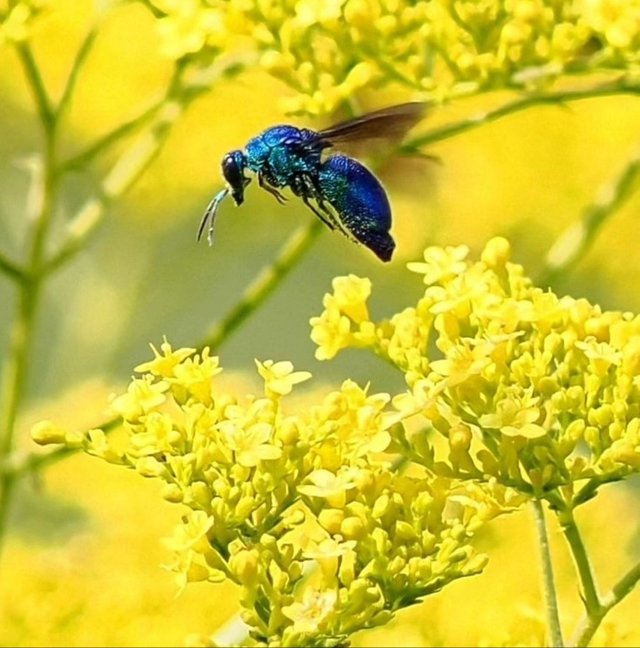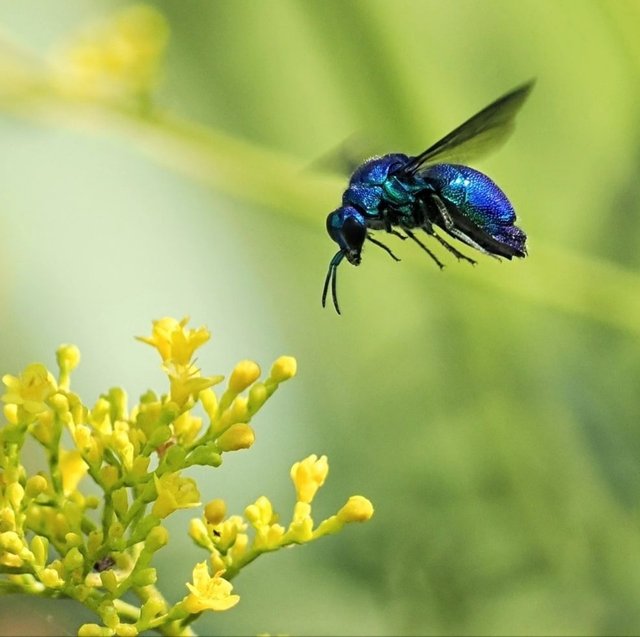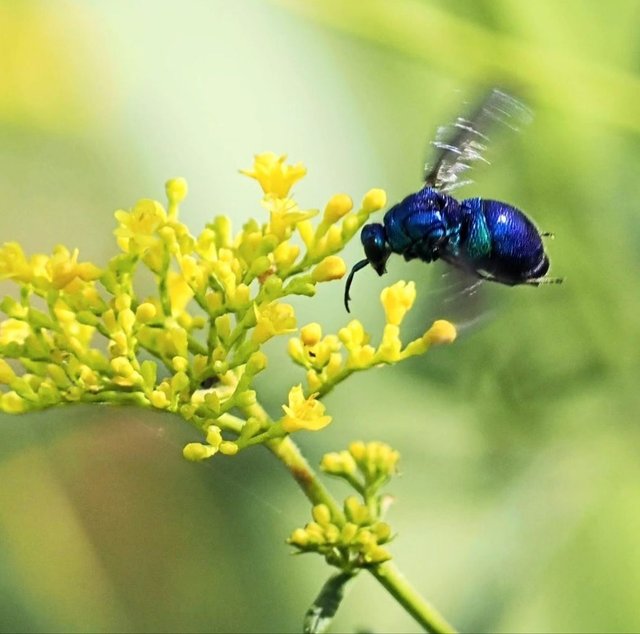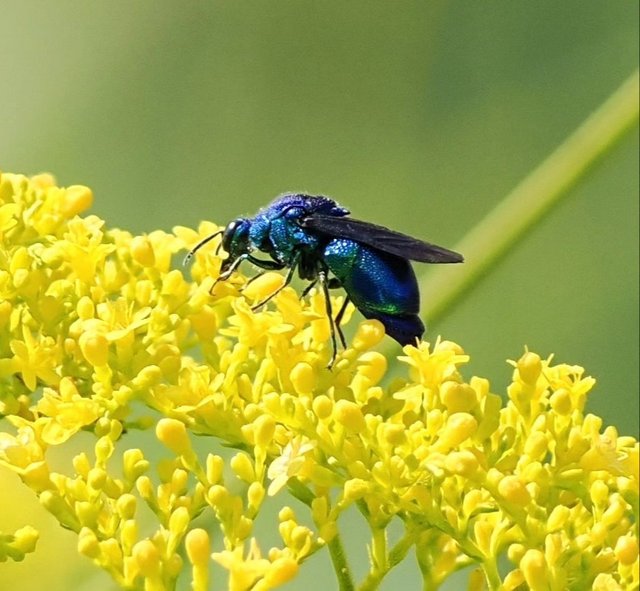Beautiful Colour Flower and Chrysis Ignita
Chrysis ignita: The Jewel Wasp of the Wild
The insect world is filled with fascinating and intricately beautiful creatures, but few are as striking as the Chrysis ignita, also known as the Ruby-tailed wasp or the Jewel wasp. This species belongs to the family Chrysididae, commonly known as cuckoo wasps, and it gets its name from the dazzling metallic hues that adorn its body. While it might look like a jewel with its shimmering, multi-colored exoskeleton, Chrysis ignita is far more than just a pretty sight; it has a unique lifestyle and plays a key role in the balance of the ecosystems it inhabits.
Appearance and Distribution
Chrysis ignita is famous for its iridescent appearance, boasting bright colors that range from metallic blues and greens to fiery reds and coppers, giving it the appearance of a living gem. The body is generally between 5 to 12 millimeters in length, and the colors are produced by light interference rather than pigments, much like a peacock’s feathers. This means the insect can appear to change colors depending on the angle of light hitting it.
These wasps are widely distributed throughout Europe and can also be found in parts of Asia and North America. They prefer dry and sandy habitats, but can also be found in urban gardens, meadows, and even woodlands, making them a versatile species when it comes to environment preferences.
A Parasitic Lifestyle
While Chrysis ignita is visually captivating, its life history reveals a darker side. Like many members of the Chrysididae family, Chrysis ignita is a parasitic wasp, meaning it lays its eggs in the nests of other solitary bees and wasps. Specifically, it targets species that build their nests in crevices, hollow stems, or burrows.
The female Chrysis ignita carefully stalks her host, waiting for the perfect opportunity to invade the nest and lay her eggs. In some cases, the host may still be present in the nest, leading to tense interactions. The wasp’s robust exoskeleton protects it from the host's stings or bites as it waits for its chance to deposit eggs. Once inside the host’s nest, she lays her eggs alongside the host’s own brood.




Thanks For Reading
Device Information
| Device | Redmi Note 10 Pro |
|---|---|
| Lens | 64 mp |
| Location | Bangladesh |
